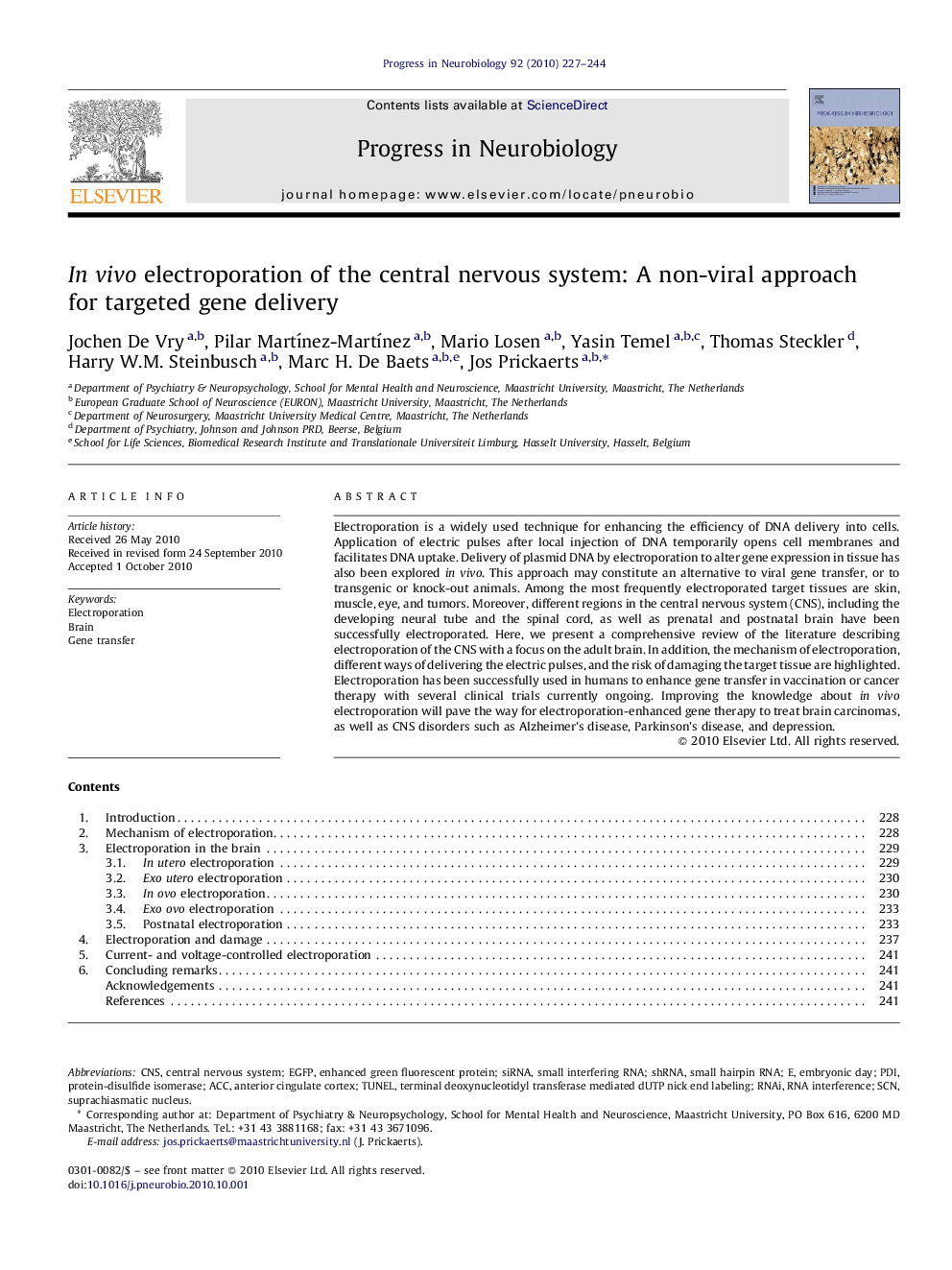| Article ID | Journal | Published Year | Pages | File Type |
|---|---|---|---|---|
| 4353545 | Progress in Neurobiology | 2010 | 18 Pages |
Electroporation is a widely used technique for enhancing the efficiency of DNA delivery into cells. Application of electric pulses after local injection of DNA temporarily opens cell membranes and facilitates DNA uptake. Delivery of plasmid DNA by electroporation to alter gene expression in tissue has also been explored in vivo. This approach may constitute an alternative to viral gene transfer, or to transgenic or knock-out animals. Among the most frequently electroporated target tissues are skin, muscle, eye, and tumors. Moreover, different regions in the central nervous system (CNS), including the developing neural tube and the spinal cord, as well as prenatal and postnatal brain have been successfully electroporated. Here, we present a comprehensive review of the literature describing electroporation of the CNS with a focus on the adult brain. In addition, the mechanism of electroporation, different ways of delivering the electric pulses, and the risk of damaging the target tissue are highlighted. Electroporation has been successfully used in humans to enhance gene transfer in vaccination or cancer therapy with several clinical trials currently ongoing. Improving the knowledge about in vivo electroporation will pave the way for electroporation-enhanced gene therapy to treat brain carcinomas, as well as CNS disorders such as Alzheimer's disease, Parkinson's disease, and depression.
Research highlights▶ Electroporation (EP) offers a non-viral approach for targeted gene delivery. ▶ EP is used to up- or downregulate gene expression in the CNS. ▶ Successful clinical applications include vaccination and electrochemotherapy. ▶ CNS disorders such as Parkinson's and depression may benefit from new EP therapies.
